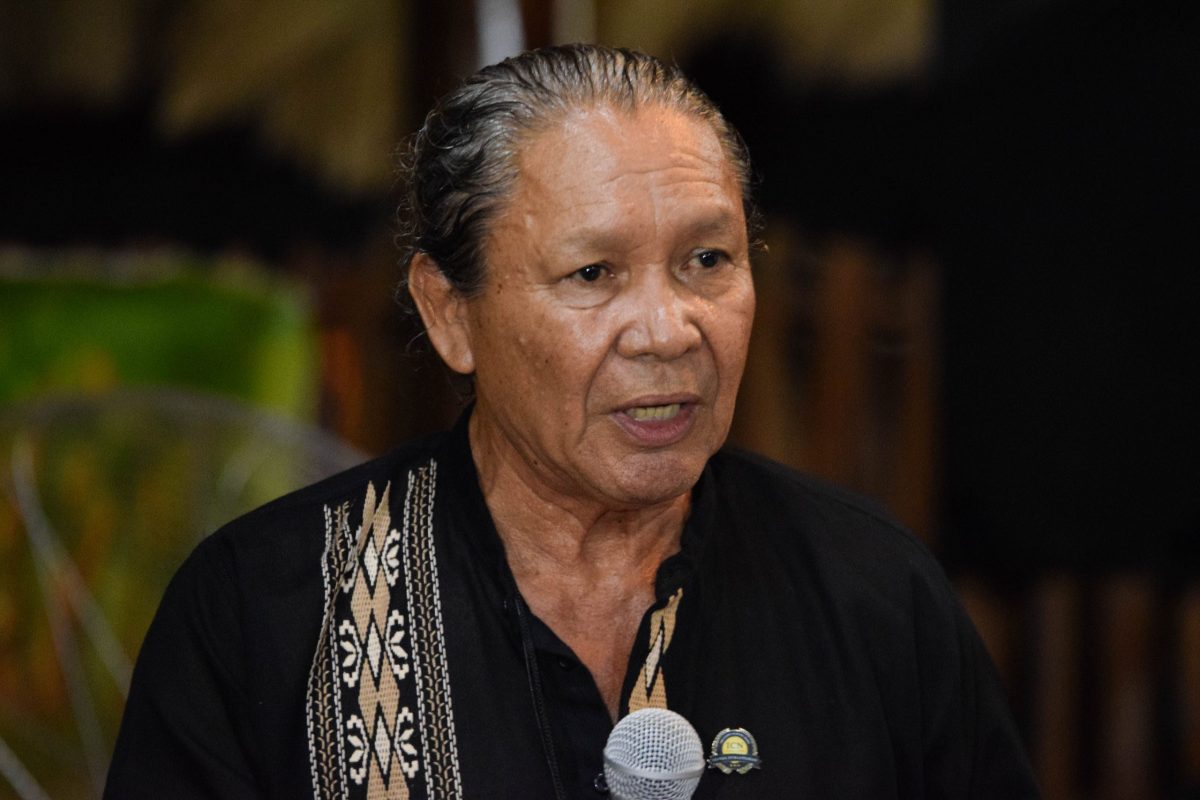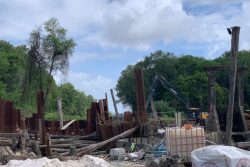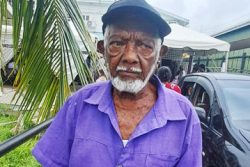September is here, which means it is Heritage Month. During this month, the National Gallery of Art, Castellani House will host an exhibition of artwork by mostly Indigenous artists who form the group The Moving Circle. Their exhibition is due to open on September 14.
I think of the artman-shaman, recently departed. He was the organiser of the group and a guiding force behind their exhibitions. I suspect that those of us who regularly attended this annual exhibition in the past will miss seeing new work from our friend, mentor, artist, and teacher George Simon (1947 to 2020). Fortunately for him, he received his flowers during his lifetime. So, the visual tributes during the September months since his passing are not a little too late. His friends, students, and mentees celebrated him, and so did his country and the wider Caribbean. I think of those whom he encouraged to harness their talents to paint, sculpt, write, shut out the noises of empty hyper-criticality, and create.
While Simon ventured far from these shores, he remained tethered. So, it was sad to learn that he died there not here, albeit with his family; but he is not forgotten here. Already for this September season, I have seen visual tributes from one who adopted him as a father. Every July since his passing, another of his adopted sons celebrates him. Recently, the University of Guyana refurbished his grand tribute to Wilson Harris, one of our giants of letters. Simon’s mural The Palace of the Peacock – Homage to Wilson Harris (2009) adorns the lower ground floor of the Humanities building of the Faculty of Education and Humanities. The refurbishment was done quietly and while the subtlety of the multiple washes of carefully modulated colour are no longer evident, an effort was made to preserve the work.
In the draft copy of his autobiographical essay ‘The Shaman’s Journey Along the Milky Way’ (published in the 2006 edition of the Arts Journal), Simon chronicled his journeys away from his boyhood in the village of Pakuri (St Cuthbert’s Mission) into multiple incarnations of himself. These journeys were grounded in the possibilities of the geographical spaces he inhabited. As a schoolboy in Mackenzie (now Linden), he was a varied sportsman. As a young wharf clerk in Georgetown, he was a motorbike-riding, sharply-dressed, party-going street-savvy “City Boy”. Later, at age 25, he was a summer-tourist in London, and soon thereafter, a serious student at Thurrock Technical College in Essex, UK.
Simon was raised from the age of 13 by an English Anglican priest and thus to value Christianity. However, describing his time at Thurrock Simon wrote, “A great conflict developed between my life in the church and my life as a young artist.” His explanation which followed positioned his pursuit of visual art at odds with his Christian walk. This conflict, he implied, precipitated a medical dilemma. Together, his questioning of Christianity and the medical dilemma led to his departure from Essex and his eventual destination of Portsmouth Polytechnic (today the University of Portsmouth). The great conflict also ushered in the beginnings of his spiritual engagement with Taoism.
Of Taoism Simon wrote, “The philosophy speaks of living in harmony with nature and especially that power lies within the self and not outside, […]. It provided practical ways to live a healthy, spiritual and long life. This appealed to me. There was no mention of ‘sin’ and this I welcomed. To live in harmony with nature was what I was born into as an Amerindian. I embraced this theory. I decided to follow the Way and thus learn more about myself.”
Following Simon’s return to Guyana, he transitioned from printmaking (his major study at Portsmouth) to painting and eventually robust Indigenous-themed work. The latter has been reported on variously along with his pivotal role in organising the Six Lokono Artists Group. His years teaching at the E R Burrowes School of Art and his years working alongside Denis Williams at the Walter Roth Museum are also known. These characterised his activities of the 1980s. However, less known is Simon’s intense spiritual journey which informed his later art.
Departing Guyana in 1998, Simon’s journeying-path made a detour away from his original destination and instead, he found himself in Chad, Africa. While there he did not paint substantially but he did continue to encourage other creatives and engaged in the exploration of Islam and Islamic culture. From Chad, Simon journeyed to Lyon, France for an artist residency. It was in Lyon that Simon reported being substantially introduced to Shamanism and awakened to its possibilities. As a consequence, the apparent meagre awareness of the religious system that he had gained in Chad began to be significantly considered while in France. However, Simon’s interest in Shamanism would be later practically explored in Canada through healing sessions and instead in France, he was initiated into Qi Gong and Tai Chi, movement and meditation practices.
From Canada, Simon journeyed to Haiti where he spent three years. He noted, “I recognized Shamanism in Voodoo. For me, Voodoo is a practical religion that cements family and the community. […] Like Shamanism, Voodoo teaches respect for the natural world.” In Haiti, Simon befriended Houngans and a Mambo (male priests and a female priestess of Voodoo), visited peristyles – worship spaces of Voodoo practitioners, and in other ways educated himself about the religion. Simultaneous to learning about Voodoo, Simon continued to ground himself with studies in Shamanism, Taoist practices, and the meditative movement practices learned while at Lyon. Simon wrote, “So it would seem [that] very disparate forms of spirituality – Taoism and now Voodoo – led me back to Shamanism (the way I was brought up until age 13).”
Simon’s autobiographical essay was written shortly after his return to Guyana and a nearly seven-year physical absence punctuated by two brief visits in the early 2000s. “Haiti enabled me to become conscious and fully embracing of my Amerindian-ness, my rich heritage. … Such has been my journey, thus far.”
Often when the foundational basis of Simon’s work is written or spoken about, the Indigenous aspect is highlighted in troubling abstraction. But in his own words of conversation and in the aforementioned autobiographical essay, he not only grounded his individual sensibility and artwork in the specificity of his ethnocultural identity and the experiences of reclamation but also in the cosmological views of the Indigenous peoples of North and South America, Taoism, Voodoo and certain teachings of Hinduism. No non-Christian belief system with something to offer was condemned or ostracised by him. Simon fundamentally sought for himself peace within and freedom to be nurtured spiritually from the multiple systems of belief that characterise our diverse human existence. He believed himself a Shaman. Perhaps, he was. And painting was part of his medicine.
Akima McPherson is a multimedia artist, art historian, and educator







